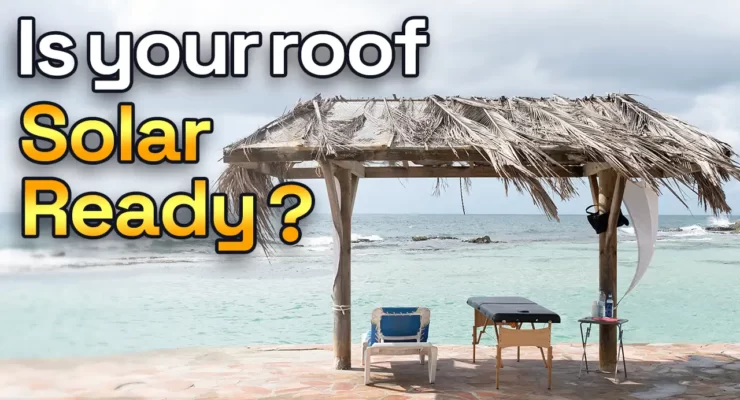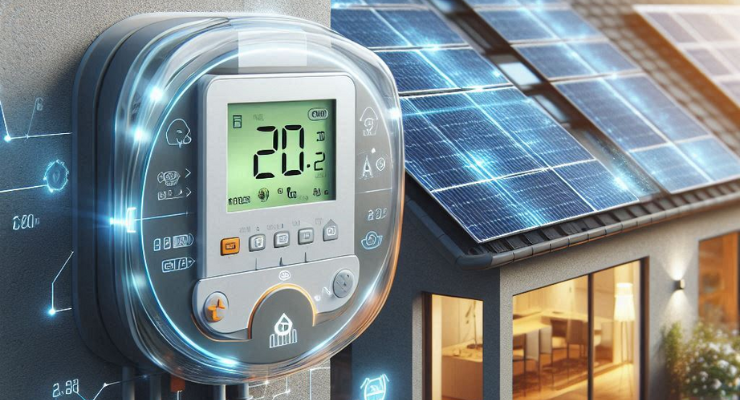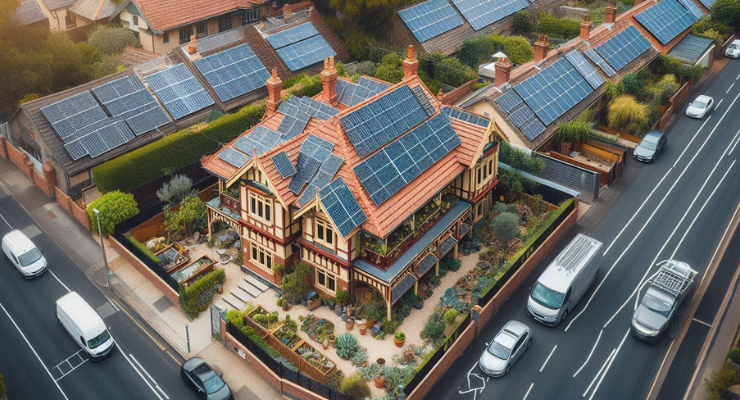Fast read
Before proceeding with solar panel system installation, it's important to carefully evaluate your roof's suitability. Consider the available roof space, direction, and potential shading to determine the optimal positioning for solar panels.
Check the age and condition of the roof, as well as its strength to support the additional weight. For tile roofs, ensure there are spare tiles available. Heritage-listed properties may require specific approvals for solar installation, while some areas might have council restrictions regarding panel visibility.
It is important to assess and follow regulations when installing a solar system. This will ensure that you get the most out of your system. It will also help to make sure that your system is successful. Consulting with professionals can provide valuable guidance throughout the process.
What to check on your roof before installing solar
Installing solar panels is a significant investment that requires careful consideration and planning. One of the crucial aspects to evaluate before proceeding with solar installation is the suitability of your roof. Your roof plays a vital role in supporting the solar panels and ensuring they perform efficiently for years to come.
Solar panels are designed to last for decades, so it’s essential to have a roof that’s in good shape to support them. Look for signs of wear and tear, such as cracked or missing shingles, sagging areas, or water damage. If your roof needs repairs or is nearing the end of its lifespan, it might be best to address these issues before installing solar panels.
Next, consider the orientation and angle of your roof, as this can impact the performance of your solar panels. Ideally, your roof should face south to capture the maximum amount of sunlight throughout the day. Additionally, the angle of your roof should be suitable for solar energy capture. While solar panels can still work on roofs facing other directions or with different slopes, they may be less efficient.
The available roof surfaces for installing solar panels
Larger roof spaces are better, particularly with solar inverter systems. You would want to have at least 8-10 square metres of roof space for string inverter systems. This allows space to place panels that can face the same direction. Smaller spaces can be used but will likely require microinverters or power optimisers.
Direction of the roof
This will factor in generating a performance estimate and profile of the time of day and how much electricity can be generated. Roof surfaces from north to east or west are great for installing panels. East is great for morning generation, the west is great for afternoon peaks, and the north provides the most during the middle of the day.
Potential shading
Identify if any trees, aerials, chimneys or anything else will cast shade on the surface. If you can, also find how much of the roof and how long the panels would be affected during the day.
Solar would not be suitable for roof surfaces that are heavily shaded for much of the day. There may be ways to design around partial and intermittent shading, including using micro-inverters and optimisers. If there is any shading, look at pruning trees and moving anything that can be adjusted.
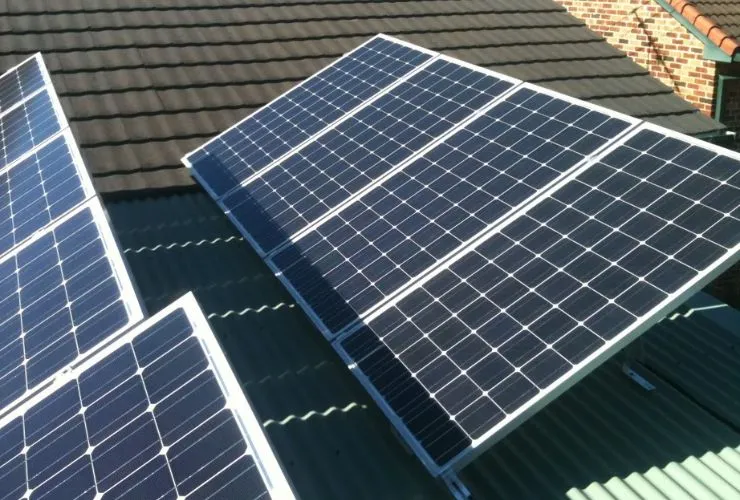
Roof age and lifespan
Consider the age of your roof and its remaining lifespan. Installing solar panels is a long-term commitment. Your roof should have a significant lifespan to maximise the return on investment.
If your roof is near the end of its lifespan, it may be best to replace it before installing solar panels. This ensures that you won’t need to remove and reinstall the panels due to roof replacement prematurely.
Strength of the roof
Many homes with wooden truss roofs are well-suited for installing solar panels. These roofs are generally strong enough to support the weight of the solar panels and even people walking on the roof during the installation process. If your roof can support your weight without any issues, it should be able to hold solar panels. Your roof needs to be strong enough to handle the weight of the solar panels.
If your roof has a unique or non-standard design, it’s a good idea to consult with a structural engineer or builder before proceeding with the solar panel installation. They can check the roof to see if it is strong enough to support the solar panels. They can also check the stability of the roof. This is important to ensure that the roof can safely hold the extra weight of the solar panels.
Condition of the roof surface, tile, colour bond etc
Before installing the panels, you should check that the roof is in good condition and not damaged. If rust or corrosion occurs on your metal roof or tin roof, repairing it before installing solar is worth it.
Similarly, for tile roofs, check the condition of the tiles to ensure they will be ok for the long term. Otherwise, look at repairing or replacing.
Make sure you have extra tiles for tile roofs. It’s best to have at least twelve, but having more is even better. The number of spare tiles needed depends on the condition of the roof.
Heritage listing
If your home is older, check if it is heritage-listed. If it is, check if there are restrictions for solar.
In many cases, installing solar panels on heritage-listed properties requires obtaining specific approvals or permits from relevant authorities. These processes involve detailed assessments, documentation, and consultation with heritage experts or local preservation boards. Familiarising yourself with the necessary procedures and engaging with the appropriate authorities will help ensure compliance with heritage protection regulations.
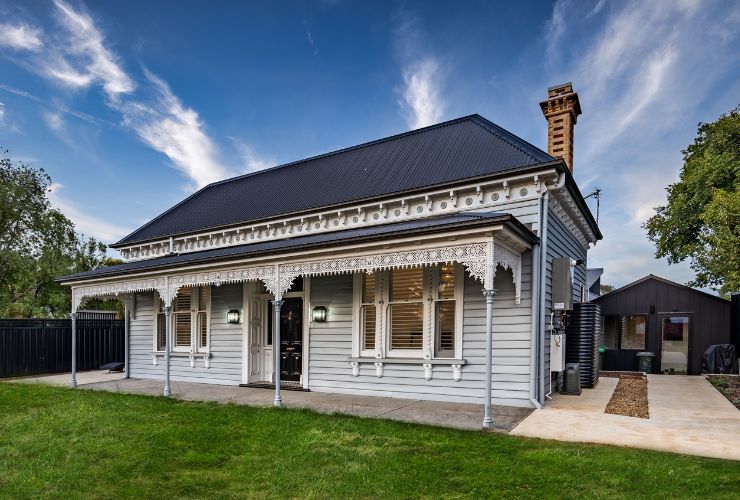
Council restrictions when installing solar
Some councils in certain areas have restrictions on panels being visible from the street. Before installing solar panels on your home, it’s important to check with your local council for any restrictions.
Council restrictions include zoning and planning regulations, building codes, permits, aesthetics, and heritage considerations. These restrictions ensure the orderly development of residential areas, maintain safety standards, preserve visual appeal, and adhere to community guidelines. By researching and complying with these restrictions, you can avoid conflicts, ensure compliance, and make an informed decision about your solar panel installation.
Conclusion
Before considering solar panel installation, it is crucial to assess your roof thoroughly. Checking your roof regularly is important. This ensures that it is strong and has a long life ahead.
Additionally, it should face the right direction and receive enough sunlight. Lastly, it should be able to support solar panels. Consulting with professionals can provide valuable insights and guidance during the evaluation process. By addressing any concerns before proceeding, you optimise the overall success of your solar system.
